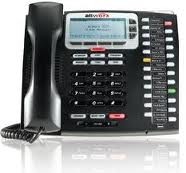Caller ID
Caller Identity Software
Caller ID enables a person receiving an incoming call to identify the calling party before answering the call.

Features List
- Conforms to Telcordia (Bellcore) GR-30-CORE
- Conforms to ETSI ETS 300 778
- Supports both transmit and receive functions
- Supports multiple channels
- C-Callable
Availability
Platforms Armv7-A, Armv8-A, Armv9-A | Arm Cortex-A8/A9/A15 Texas Instruments – TI TMS320C6000 C64x/C64x+/C66x/C674x | TI TMS320C5000 C55x / C54x
ADT Caller-ID is available on the above Platforms: Other configurations are available upon request.
Specifications
↓ Click on links below to view specification tables.
Cortex-A8 / A9 / A15
CPU UTILIZATIONType I caller ID:
| Function | MIPS (Peak Loading) |
| TX CID transmit function | 0.05 |
| TX CID receive function | 1.4 |
CPU UTILIZATION
Type II caller ID:
| Function | MIPS (Peak Loading) |
Function MIPS (Peak loading) TX CID transmit function | 0.5 |
| TX CID transmit detect ACK function | 0.8 |
| RX CID receive function | 1.8 |
| RX CID receive generate ACK function | 0.2 |
Caller ID ARM Cortex-A8 / A9 / A15
MEMORY REQUIREMENTSAll Memory usage is given in units of byte.
Type I caller ID:
| Function | Program Memory | Data Memory | Scratch | Per-channel Data Memory |
| Tx CID Transmit | 8784 | 296 | — | 188 |
| Rx CID receive | — | 162 |
Type II Caller ID:
| Algorithm | Program Memory | Data Memory | Scratch | Per-channel Data Memory |
| Tx CID Transmit | 16368 | 1336 | — | 224 |
| Rx CID receive | — | 192 | ||
| Tone Detector | 6480 | 3792 | 400 | 168 |
| Tone Generator | 4000 | 300 | — | 64 |
TI TMS320C6000
Caller ID C64x / C64x+ / C66x / C674x
MEMORY REQUIREMENTSAll Memory usage is given in units of byte.
ADT Type 1 CID (On-hook data transmission)
| Function | MIPS | Program Memory | Data Memory | Per-channel Data Memory |
| Tx-Partial Format | (Init function) 0.04 | 2816 | 296 | 224 |
| Tx | (Init function) 0.69 | 4736 | 296 | 224 |
| Rx | 0.52 | 3552 | 296 | 192 |
CPU UTILIZATION & MEMORY REQUIREMENTS
All Memory usage is given in units of byte.
ADT Type 2 CID (Off-hook data transmission)
| Algorithm | MIPS (Peak loading) | Program Memory | Data Memory | Per-channel Data Memory |
| Tx | 0.88 | 13654 | 4072 | 456 |
| Rx | 0.93 | 11040 | 1636 | 422 |
TI TMS320C5000
Caller ID C55x
MEMORY REQUIREMENTSAll Memory usage is given in units of byte.
ADT Type 1 CID (On-hook data transmission)
| Function | MIPS | Program Memory | Data Memory | Per-channel Data Memory |
| Tx-Partial Format | (Init function) 0.06 | 1394 | 296 | 232 |
| Tx | 1.4 | 2092 | 296 | 232 |
| Rx | 1.16 | 1439 | 296 | 208 |
MEMORY REQUIREMENTS
All Memory usage is given in units of byte.
ADT Type II CID (On-hook data transmission)
| Function | MIPS | Program Memory | Data Memory | Per-channel Data Memory |
| Tx | 0.85 | 6300 | 4032 | 464 |
| Rx | 1.44 | 4591 | 1656 | 440 |
Caller ID C54x
MEMORY REQUIREMENTSAll Memory usage is given in units of 16-bit word.
ADT Type I CID (On-hook data transmission)
| Function | MIPS | Program Memory | Data Memory | Per-channel Data Memory |
| Tx-Partial Format | (Init function) 0.05 | 934 | 148 | 100 |
| Tx | 0.75 | 1409 | 148 | 100 |
| Rx | 2.4 | 875 | 148 | 98 |
MEMORY REQUIREMENTS
All Memory usage is given in units of 16-bit word.
ADT Type II CID (On-hook data transmission)
| Function | MIPS | Program Memory | Data Memory | Per-channel Data Memory |
| Tx | 1.15 | 1177 | 2016 | 188 |
| Rx | 2.8 | 2738 | 828 | 162 |
Description
Adaptive Digital’s Caller ID software generates and detects the Calling Number Delivery signal specified in Telcordia (Bellcore) GR-30-CORE and ETSI ETS 300 778 standards. The transmitter can be configured to operate in either type 1 mode (signal transmitted between ring bursts) or type 2 (signal generated in absence of ring bursts).
Caller ID enables a person receiving an incoming call to identify the calling party before answering the call. The information is usually displayed on a customer premise device that is inserted between the central office and the telephone.
The Caller’s information can be sent when the receiving phone is on-hook or off-hook. In the case of off-hook transmission, the Caller ID device may block the transmitted modem signal from passing through to the telephone. On-hook Caller ID is referred to as “type 1”, which is specified in the ETSI ES 200 778-1. While off-hook Caller ID is known as “type 2”, which is specified in the ETSI ES 200 778-2.
The ADT transmit Caller ID software supports two options for formatting the data link layer of a transmit CID burst, Full Format and Partial Format.
Function
API function call summary
Type 1 and Type 2 Caller ID:
CIDTX_ADT_init(…) CIDRX_ADT_init(…)
CIDTX_ADT_transmit(…) CIDRX_ADT_receive(…)
CIDRX_ADT_parseMessage(…)
Additional Type 2 Caller ID:
CIDRX_ADT_genACK(…) CIDTX_ADT_detACK(…)
CIDTX_ADT_signalACK(…)
CIDRX_ADT_config(…) CIDRX_ADT_getConfigStatus(…)